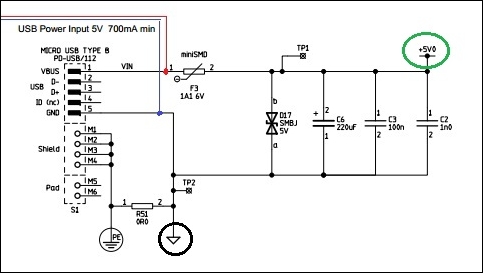There is more than one way to power the boards. In fact, there are three ways:
- Micro USB through the OTG Port
- 5V connector for the M2
- Power through the GPIO
The most common way to power the board is through the micro USB port. This is usually because we all seem to have a surplus of cables lying around and they generally tend to be USB from hardware such as cell phones and controllers. The M2 also comes equipped with a 5V DC connector that is new to the Banana Pi.
One way you can power your project that may be right for you is over GPIO. The pins are connected to the 5V rail, which means you can supply power to the pins. This means you can wire up whatever sensors and electronics you need for your project, as well as a direct power line. This is useful if you are planning on doing something battery- or solar-powered. The +5V supplied from the USB connector is filtered to give a stable 5V supply to the 5V0 Rail.

There are implications to powering the board this way, though. Although you can supply 5V of power though the GPIO pins, there is no protection for the board. This is also true if you use the 3.3V pins. This means that the board is not protected from spikes and you run the risk of a fried board. It is really recommended that you stick to micro USB or the 5V connector unless you are prepared to build in that protection before supplying power. Never power the device through GPIO pins AND micro USB at the same time. Always use only one power source.
